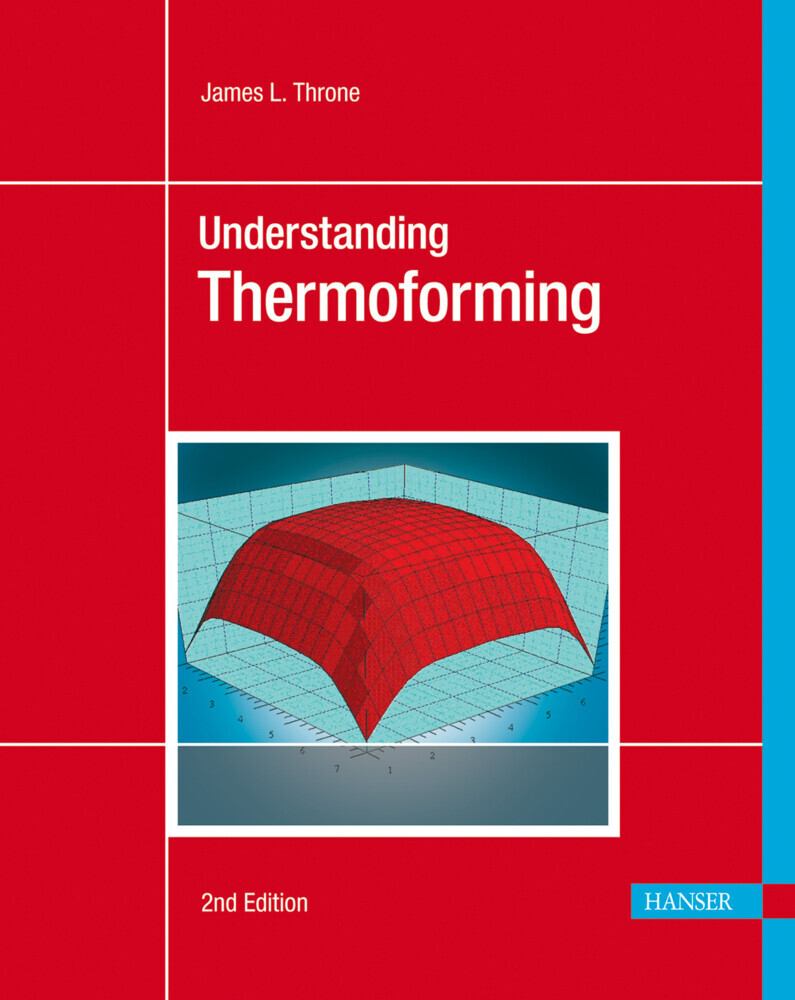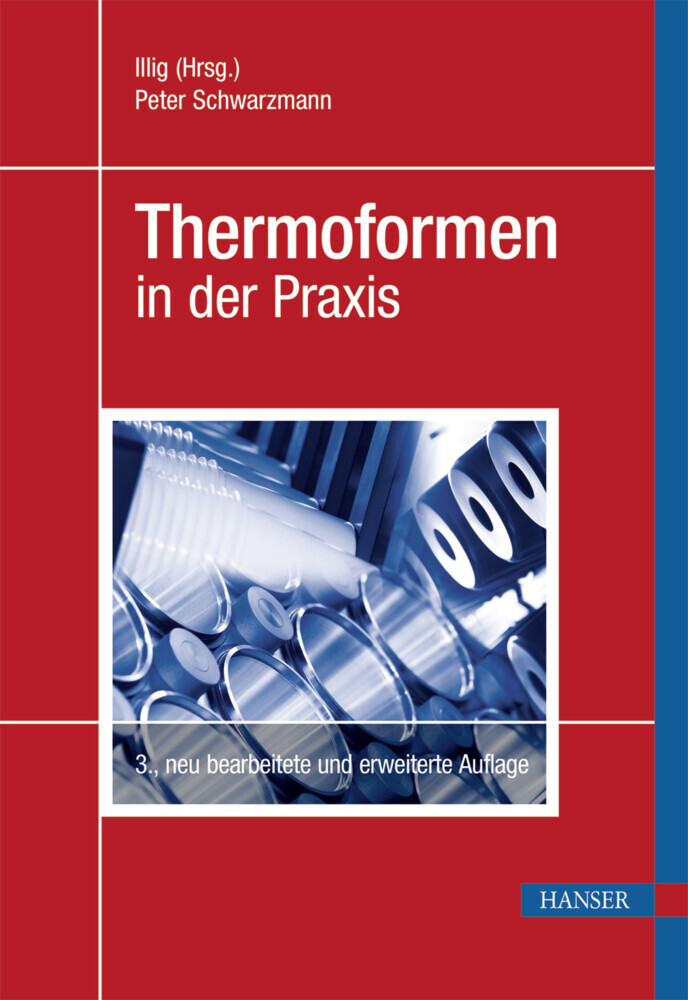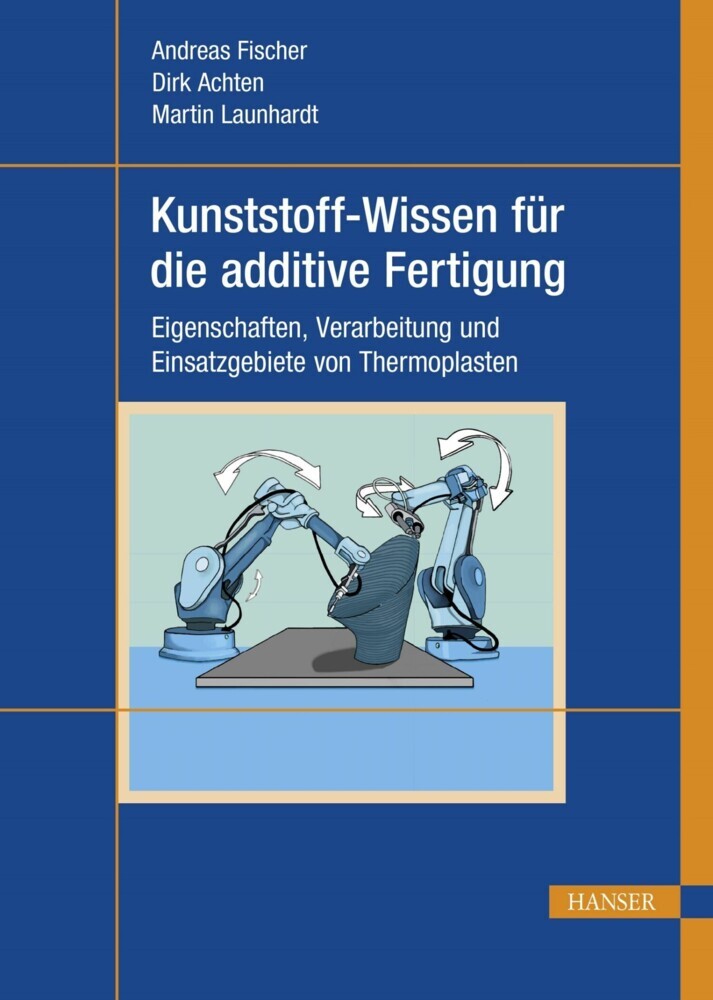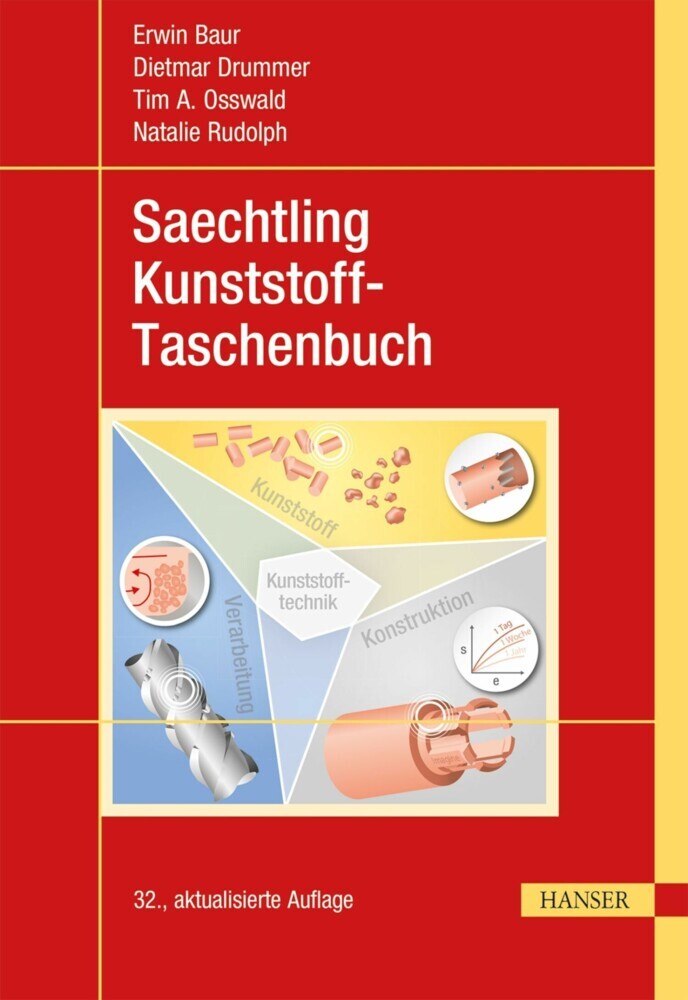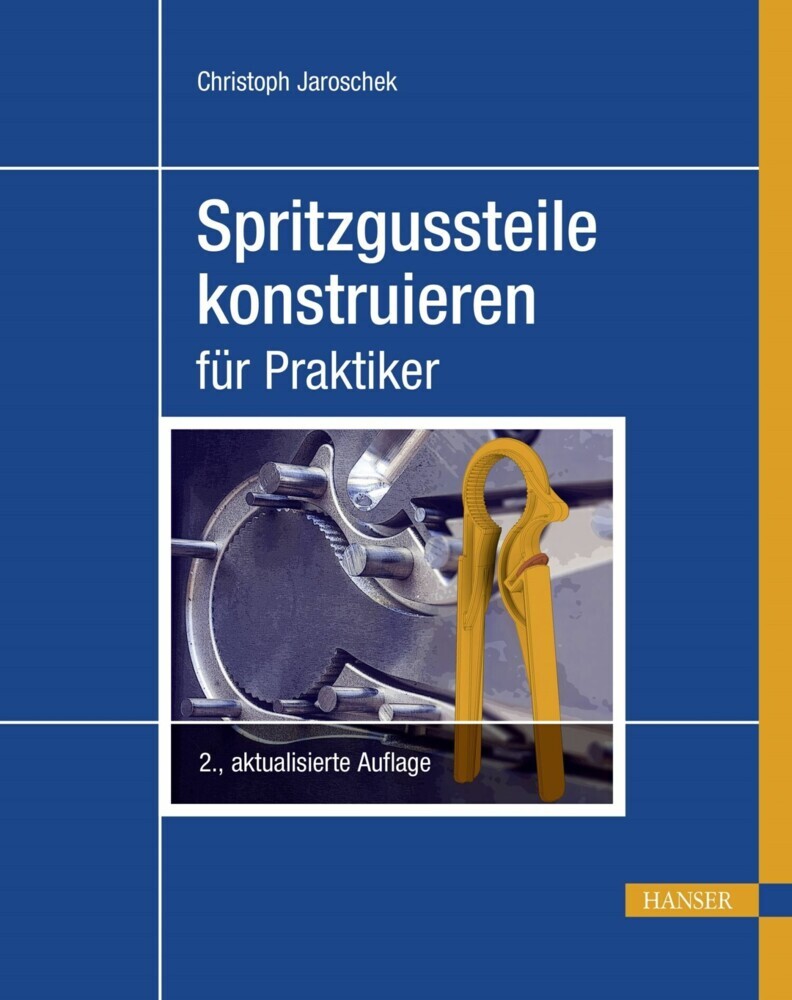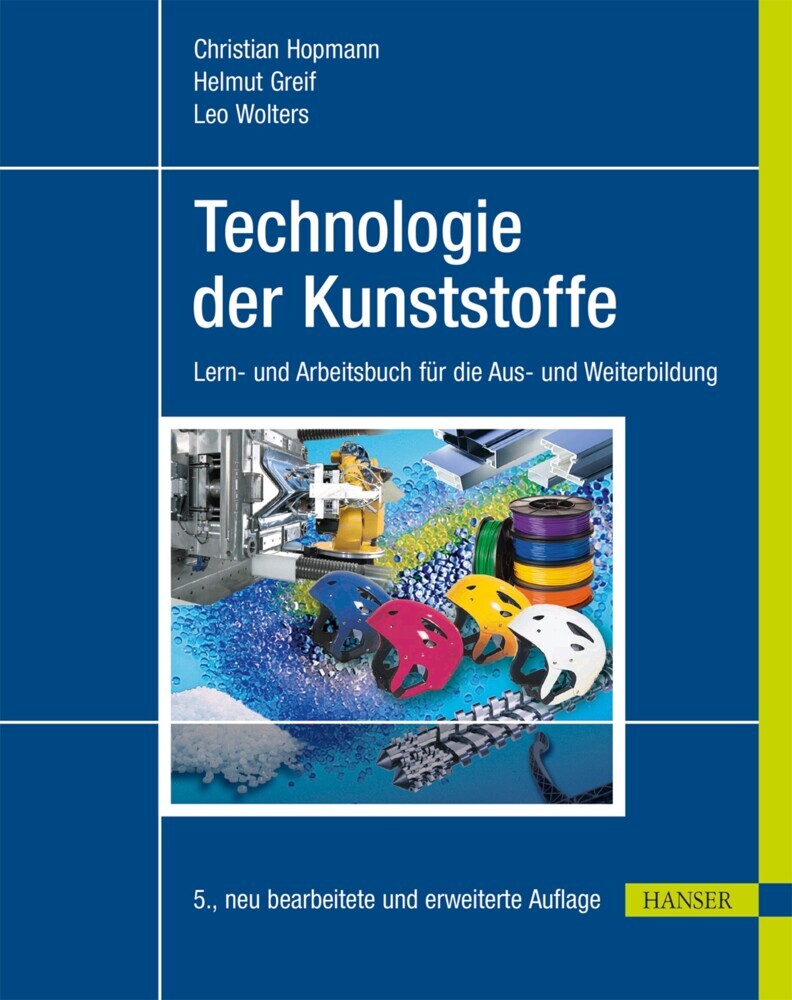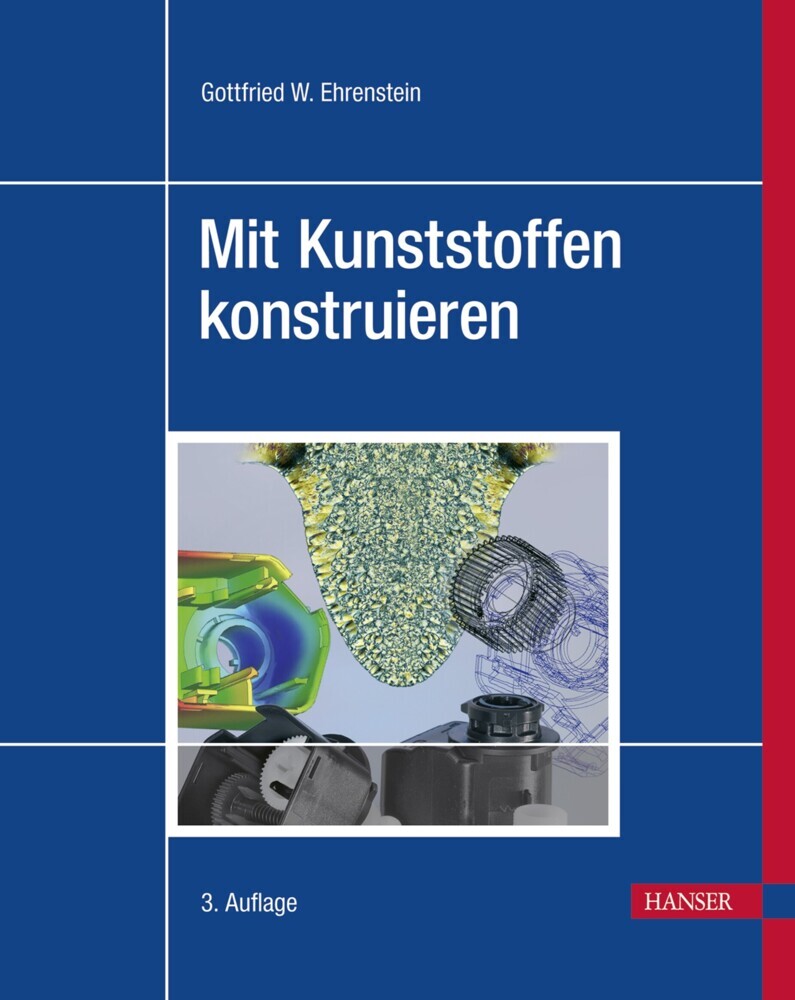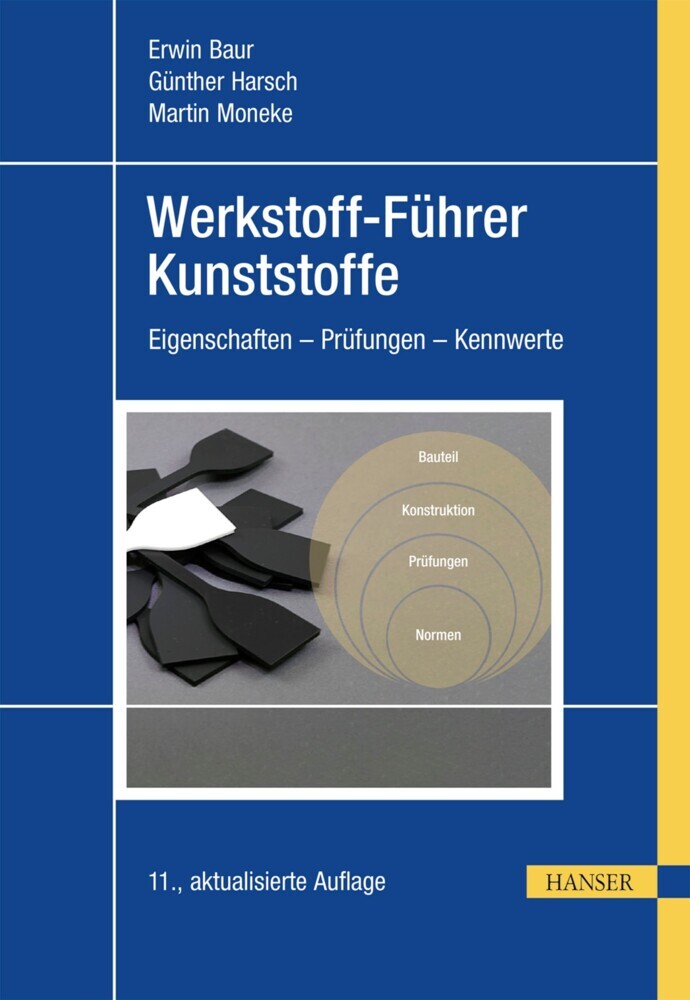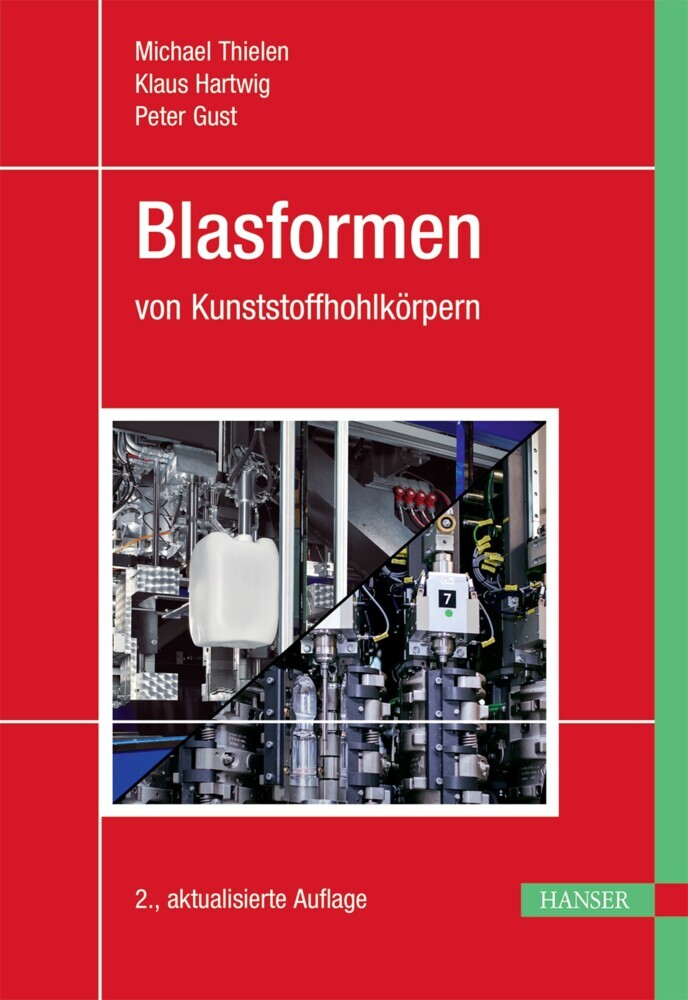Understanding Thermoforming
Modern thermoforming practice is a balance of practical experience and the application of engineering principles. This very practical book introduces the process, its tools and machinery, and the commonly used materials to novices and practicing engineers alike.
Contents:
General Forming Concepts
Part Design
Machinery for the Thick-Gauge Forming Process
Machinery for the Light-Gauge Forming Process
Machines for Other Applications
Molds and Mold Design
Methods of Heating Sheet
Sheet Stretching and Cooling
Trimming
Polymers and Plastics
Quality Control
Comparison with Other Technologies
Pragmatic Aspects of Thermoforming
1;Foreword to the Second Edition;5
Contents:
General Forming Concepts
Part Design
Machinery for the Thick-Gauge Forming Process
Machinery for the Light-Gauge Forming Process
Machines for Other Applications
Molds and Mold Design
Methods of Heating Sheet
Sheet Stretching and Cooling
Trimming
Polymers and Plastics
Quality Control
Comparison with Other Technologies
Pragmatic Aspects of Thermoforming
1;Foreword to the Second Edition;52;Contents;83;1 Introduction to Thermoforming;163.1;1.1 Brief History;163.2;1.2 General Markets;183.3;1.3 Terminology;203.4;1.4 General Characteristics of Thermoformed Products;214;2 General Forming Concepts;244.1;2.1 Heating and Bending;244.2;2.2 Simple Heating and Stretching;264.3;2.3 One-Step Forming;264.3.1;2.3.1 Drape Forming;264.3.2;2.3.2 Vacuum Forming;274.3.3;2.3.3 Free Forming;274.3.4;2.3.4 Non-Uniform Heating;284.3.5;2.3.5 Matched Mold Forming;284.4;2.4 Other One-Step Forming Processes;294.4.1;2.4.1 Autoclave Forming;294.4.2;2.4.2 Diaphragm Forming;294.5;2.5 Two-Step Forming;304.5.1;2.5.1 Pneumatic Preforming;304.5.2;2.5.2 Plug Assisted or Mechanical Preforming;324.5.3;2.5.3 Pressure Forming;344.5.4;2.5.4 Coining;344.6;2.6 Three-Step Forming;344.7;2.7 Twin-Sheet Forming;354.7.1;2.7.1 Heavy-Gauge Twin-Sheet Forming;354.7.2;2.7.2 Light-Gauge Twin-Sheet Forming;374.8;2.8 Contact Forming;394.9;2.9 Thermoforming as a Portion of the Overall Manufacturing Process;405;3 Part Design;425.1;3.1 Part Design Philosophy;425.1.1;3.1.1 Design Protocol;435.1.2;3.1.2 Project Protocol;445.2;3.2 Should This Part Be Thermoformed?;455.3;3.3 General Parameters Affecting Part Design;465.3.1;3.3.1 Shrinkage;465.4;3.4 General Product Design;495.4.1;3.4.1 Corner versus Chamfer;505.4.2;3.4.2 Draft Angles;505.4.3;3.4.3 Thermal Expansion;515.4.4;3.4.4 Dimensional Tolerance;525.4.5;3.4.5 Improving Dimensional Tolerance;545.5;3.5 Part Surface Quality;555.6;3.6 Trim Line Location;565.7;3.7 In-Mold Decorating and Labeling;575.8;3.8 Seal Designs on Twin-Sheet Thermoformed Parts;585.9;3.9 Some Guidelines to Successful Part Design;596;4 Machinery for the Thick-Gauge Forming Process;646.1;4.1 Shuttle Press;646.1.1;4.1.1 Two-Oven Shuttle Press;656.2;4.2 Cabinet Press;666.3;4.3 Rotary Thermoforming Press;666.4;4.4 The Elements of Heavy-Gauge Machinery;686.4.1;4.4.1 Sheet Handling;696.4.2;4.4.2 Sheet Clamping;696.4.3;4.4.3 Sheet Shuttle or Rotation;696.4.4;4.4.4 Oven(s);696.4.5;4.4.5 The Forming Press;706.4.6;4.4.6 Pneumatic Prestretching;716.4.7;4.4.7 Plug Assist Prestretching;716.4.8;4.4.8 Load/Unload Elements;726.4.9;4.4.9 Vacuum Box and Vacuum System;726.4.10;4.4.10 Pressure Box and Pressurization System;736.4.11;4.4.11 Condition Monitors and Process Control;746.4.12;4.4.12 Safety Elements;767;5 Machinery for the Light-Gauge Forming Process;787.1;5.1 Standard Roll-Fed Machine;787.2;5.2 Contact Heater Machines;807.3;5.3 Form-Fill-Seal Operation;807.4;5.4 Elements of Light-Gauge Machinery;827.4.1;5.4.1 Sheet Take-off or Unwind Station;827.4.2;5.4.2 Pin-Chain and Pin-Chain Rail;827.4.3;5.4.3 Oven(s);837.4.4;5.4.4 The Forming Press;847.4.5;5.4.5 Plug Assist Prestretching Devices;867.4.6;5.4.6 Trim Means;867.4.7;5.4.7 In-Machine Stacking Means;877.4.8;5.4.8 Vacuum Box and Vacuum System;877.4.9;5.4.9 Pressure Box and Pressurization System;887.4.10;5.4.10 Trim or Web Take-up Station;897.4.11;5.4.11 Condition Monitors and Process Control;897.4.12;5.4.12 Safety Features;918;6 Machines for Other Applications;928.1;6.1 Extrusion-Forming Lines;928.1.1;6.1.1 Advantages of Extrusion-Forming Lines for Heavy-Gauge Forming;928.1.2;6.1.2 Advantages of Extrusion-Forming Lines for Light-Gauge Forming;938.1.3;6.1.3 Disadvantages of Extrusion-Forming Lines for Heavy-Gauge Forming;938.1.4;6.1.4 Disadvantages of Extrusion-Forming Lines for Light-Gauge Forming;938.1.5;6.1.5 Important Extruder Characteristics in In-Line Forming;948.2;6.2 Matched Mold Forming Machines;948.2.1;6.2.1 Foamed Polymer Machines;958.2.2;6.2.2 Composite and Composite Laminate Machines;958.3;6.3 Wheel Machines;968.4;6.4 Custom Machines;978.5;6.5 Twin-Sheet Forming Machines;989;7 Molds and Mold Design;1009.1;7.1 Production Mold Materials;1009.1.1;7.1.1 Cast Aluminum;1009.1.2;7.1.2 Machined Aluminum;1029.1.3;7.1.3 Other Production Mold Materials;1029.2;7.2 Prototype Mold Mat
1;Foreword to the Second Edition;5
2;Contents;8
3;1 Introduction to Thermoforming;16
3.1;1.1 Brief History;16
3.2;1.2 General Markets;18
3.3;1.3 Terminology;20
3.4;1.4 General Characteristics of Thermoformed Products;21
4;2 General Forming Concepts;24
4.1;2.1 Heating and Bending;24
4.2;2.2 Simple Heating and Stretching;26
4.3;2.3 One-Step Forming;26
4.3.1;2.3.1 Drape Forming;26
4.3.2;2.3.2 Vacuum Forming;27
4.3.3;2.3.3 Free Forming;27
4.3.4;2.3.4 Non-Uniform Heating;28
4.3.5;2.3.5 Matched Mold Forming;28
4.4;2.4 Other One-Step Forming Processes;29
4.4.1;2.4.1 Autoclave Forming;29
4.4.2;2.4.2 Diaphragm Forming;29
4.5;2.5 Two-Step Forming;30
4.5.1;2.5.1 Pneumatic Preforming;30
4.5.2;2.5.2 Plug Assisted or Mechanical Preforming;32
4.5.3;2.5.3 Pressure Forming;34
4.5.4;2.5.4 Coining;34
4.6;2.6 Three-Step Forming;34
4.7;2.7 Twin-Sheet Forming;35
4.7.1;2.7.1 Heavy-Gauge Twin-Sheet Forming;35
4.7.2;2.7.2 Light-Gauge Twin-Sheet Forming;37
4.8;2.8 Contact Forming;39
4.9;2.9 Thermoforming as a Portion of the Overall Manufacturing Process;40
5;3 Part Design;42
5.1;3.1 Part Design Philosophy;42
5.1.1;3.1.1 Design Protocol;43
5.1.2;3.1.2 Project Protocol;44
5.2;3.2 Should This Part Be Thermoformed?;45
5.3;3.3 General Parameters Affecting Part Design;46
5.3.1;3.3.1 Shrinkage;46
5.4;3.4 General Product Design;49
5.4.1;3.4.1 Corner versus Chamfer;50
5.4.2;3.4.2 Draft Angles;50
5.4.3;3.4.3 Thermal Expansion;51
5.4.4;3.4.4 Dimensional Tolerance;52
5.4.5;3.4.5 Improving Dimensional Tolerance;54
5.5;3.5 Part Surface Quality;55
5.6;3.6 Trim Line Location;56
5.7;3.7 In-Mold Decorating and Labeling;57
5.8;3.8 Seal Designs on Twin-Sheet Thermoformed Parts;58
5.9;3.9 Some Guidelines to Successful Part Design;59
6;4 Machinery for the Thick-Gauge Forming Process;64
6.1;4.1 Shuttle Press;64
6.1.1;4.1.1 Two-Oven Shuttle Press;65
6.2;4.2 Cabinet Press;66
6.3;4.3 Rotary Thermoforming Press;66
6.4;4.4 The Elements of Heavy-Gauge Machinery;68
6.4.1;4.4.1 Sheet Handling;69
6.4.2;4.4.2 Sheet Clamping;69
6.4.3;4.4.3 Sheet Shuttle or Rotation;69
6.4.4;4.4.4 Oven(s);69
6.4.5;4.4.5 The Forming Press;70
6.4.6;4.4.6 Pneumatic Prestretching;71
6.4.7;4.4.7 Plug Assist Prestretching;71
6.4.8;4.4.8 Load/Unload Elements;72
6.4.9;4.4.9 Vacuum Box and Vacuum System;72
6.4.10;4.4.10 Pressure Box and Pressurization System;73
6.4.11;4.4.11 Condition Monitors and Process Control;74
6.4.12;4.4.12 Safety Elements;76
7;5 Machinery for the Light-Gauge Forming Process;78
7.1;5.1 Standard Roll-Fed Machine;78
7.2;5.2 Contact Heater Machines;80
7.3;5.3 Form-Fill-Seal Operation;80
7.4;5.4 Elements of Light-Gauge Machinery;82
7.4.1;5.4.1 Sheet Take-off or Unwind Station;82
7.4.2;5.4.2 Pin-Chain and Pin-Chain Rail;82
7.4.3;5.4.3 Oven(s);83
7.4.4;5.4.4 The Forming Press;84
7.4.5;5.4.5 Plug Assist Prestretching Devices;86
7.4.6;5.4.6 Trim Means;86
7.4.7;5.4.7 In-Machine Stacking Means;87
7.4.8;5.4.8 Vacuum Box and Vacuum System;87
7.4.9;5.4.9 Pressure Box and Pressurization System;88
7.4.10;5.4.10 Trim or Web Take-up Station;89
7.4.11;5.4.11 Condition Monitors and Process Control;89
7.4.12;5.4.12 Safety Features;91
8;6 Machines for Other Applications;92
8.1;6.1 Extrusion-Forming Lines;92
8.1.1;6.1.1 Advantages of Extrusion-Forming Lines for Heavy-Gauge Forming;92
8.1.2;6.1.2 Advantages of Extrusion-Forming Lines for Light-Gauge Forming;93
8.1.3;6.1.3 Disadvantages of Extrusion-Forming Lines for Heavy-Gauge Forming;93
8.1.4;6.1.4 Disadvantages of Extrusion-Forming Lines for Light-Gauge Forming;93
8.1.5;6.1.5 Important Extruder Characteristics in In-Line Forming;94
8.2;6.2 Matched Mold Forming Machines;94
8.2.1;6.2.1 Foamed Polymer Machines;95
8.2.2;6.2.2 Composite and Composite Laminate Machines;95
8.3;6.3 Wheel Machines;96
8.4;6.4 Custom Machines;97
8.5;6.5 Twin-Sheet Forming Machines;98
9;7 Molds and Mold Design;100
9.1;7.1 Production Mold Materials;100
9.1.1;7.1.1 Cast Aluminum;100
9.1.2;7.1
Throne, James L.
| ISBN | 9783446418554 |
|---|---|
| Artikelnummer | 9783446418554 |
| Medientyp | E-Book - PDF |
| Copyrightjahr | 2012 |
| Verlag | Carl Hanser Fachbuchverlag |
| Umfang | 282 Seiten |
| Sprache | Englisch |
| Kopierschutz | Digitales Wasserzeichen |

